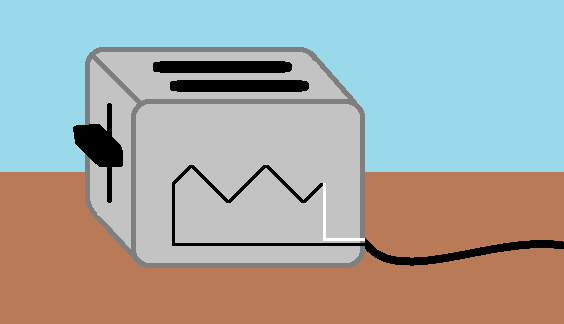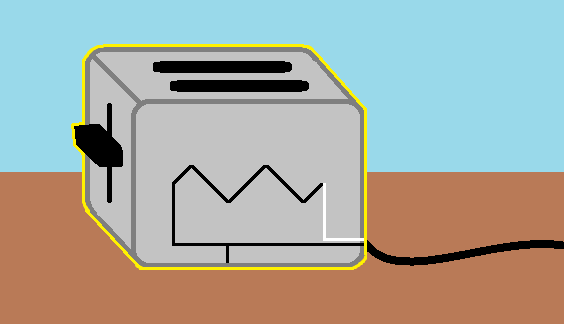The grounding conductor in an electrical system provides a safe path for fault currents to travel along. It's there to prevent electrocution.
No Grounding Conductor
Let's say we have a toaster.

Inside the toaster are two conductors, a black ungrounded (hot) conductor, and a white grounded (neutral) conductor.

To heat the toaster, current flows into the heating element through the ungrounded (hot) conductor, through the heating element, out of the heating element and back to the source through the grounded (neutral) conductor.
Now let's say there is a short between the ungrounded (hot) conductor, and the metal frame of the toaster.

Since the frame is metal; and conducts electricity, it is now electrified.

If you then touch the toaster; and you're sufficiently grounded, current will flow through you to the ground. This could lead to a nasty shock, or potentially death.

With Grounding Conductor
Now let's see what happens when we have a toaster with a grounding conductor, that is properly bonded to the non current carrying metal parts of the toaster.

There's a short in the toaster again.

However, since we have a grounding conductor this time, the current flows through the toaster into the grounding conductor and back to the source.

This creates a very low resistance path back to the source, so the current in the circuit increases rapidly (I=E/R). The increased current causes the circuit's overcurrent protection to kick in, and the breaker trips.
But the neutral is grounded?
The grounded (neutral) conductor is indeed grounded at the service entrance, however, after that point the grounded (neutral) conductor is a current carrying conductor. It's used to carry current back to the source, and so potentially always has current flowing on it. If this conductor was connected to the toaster's non current carrying metal parts, it would allow current to flow on the metal parts of the toaster.
If there was a break in the neutral conductor further down the circuit. Current could flow through the ungrounded (hot) conductor into the toaster, through the heating element, out of the heating element and down the grounded (neutral) conductor, through the toaster's metal parts, through you, and into the ground. Which could lead to a shock, injury, and/or death.
tl;dr
The grounding conductor provides shock hazard protection, and should always be properly connected. If there is no grounding conductor available, a ground-fault circuit interrupting (GFCI) device may be able to be used to provide this protection (see NEC 406.4(D)(2)(b)). This conductor should only carry current during a fault situation.
The grounded (neutral) conductor is a current carrying conductor, used to carry current back to the source. This conductor carries current during normal operation.








